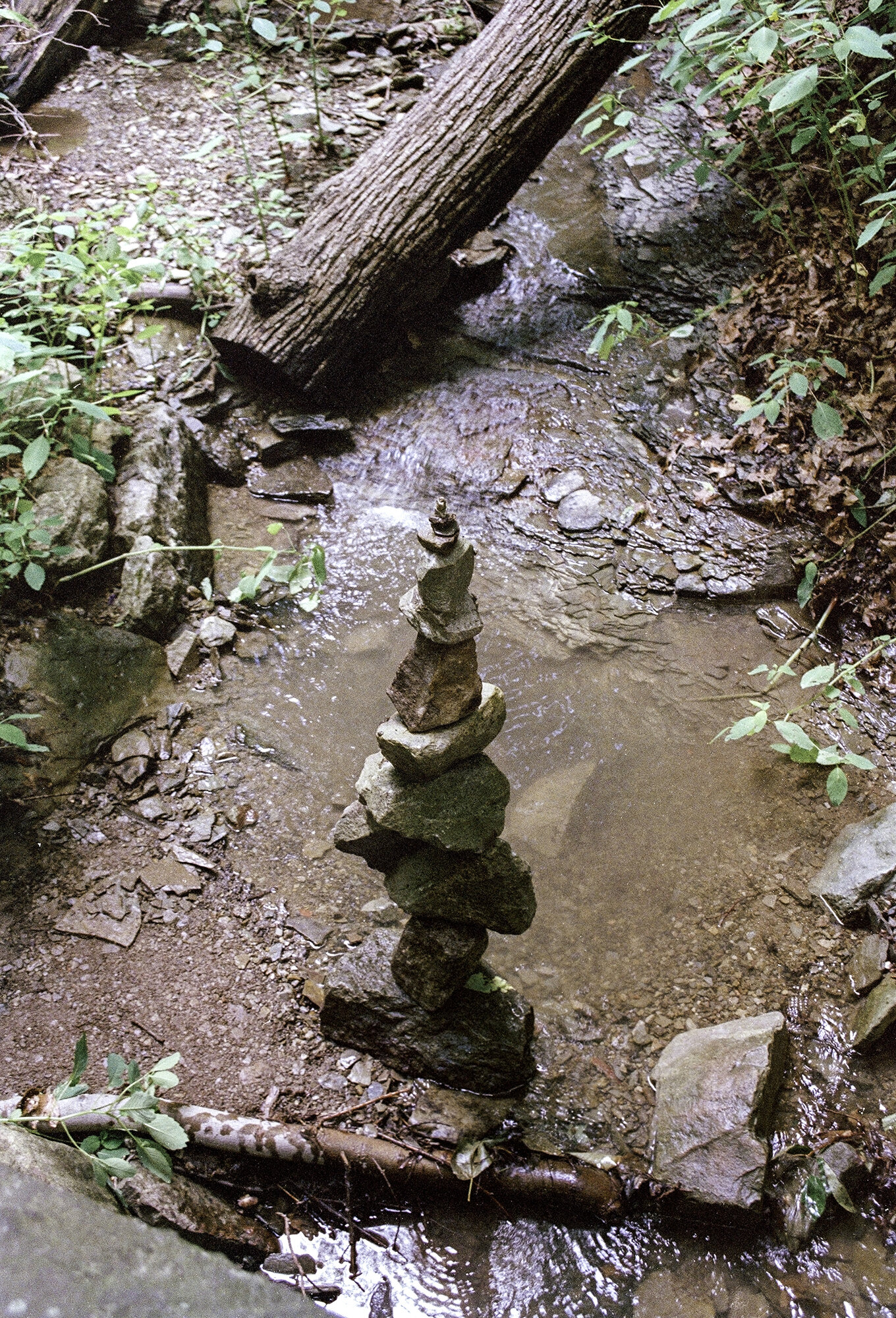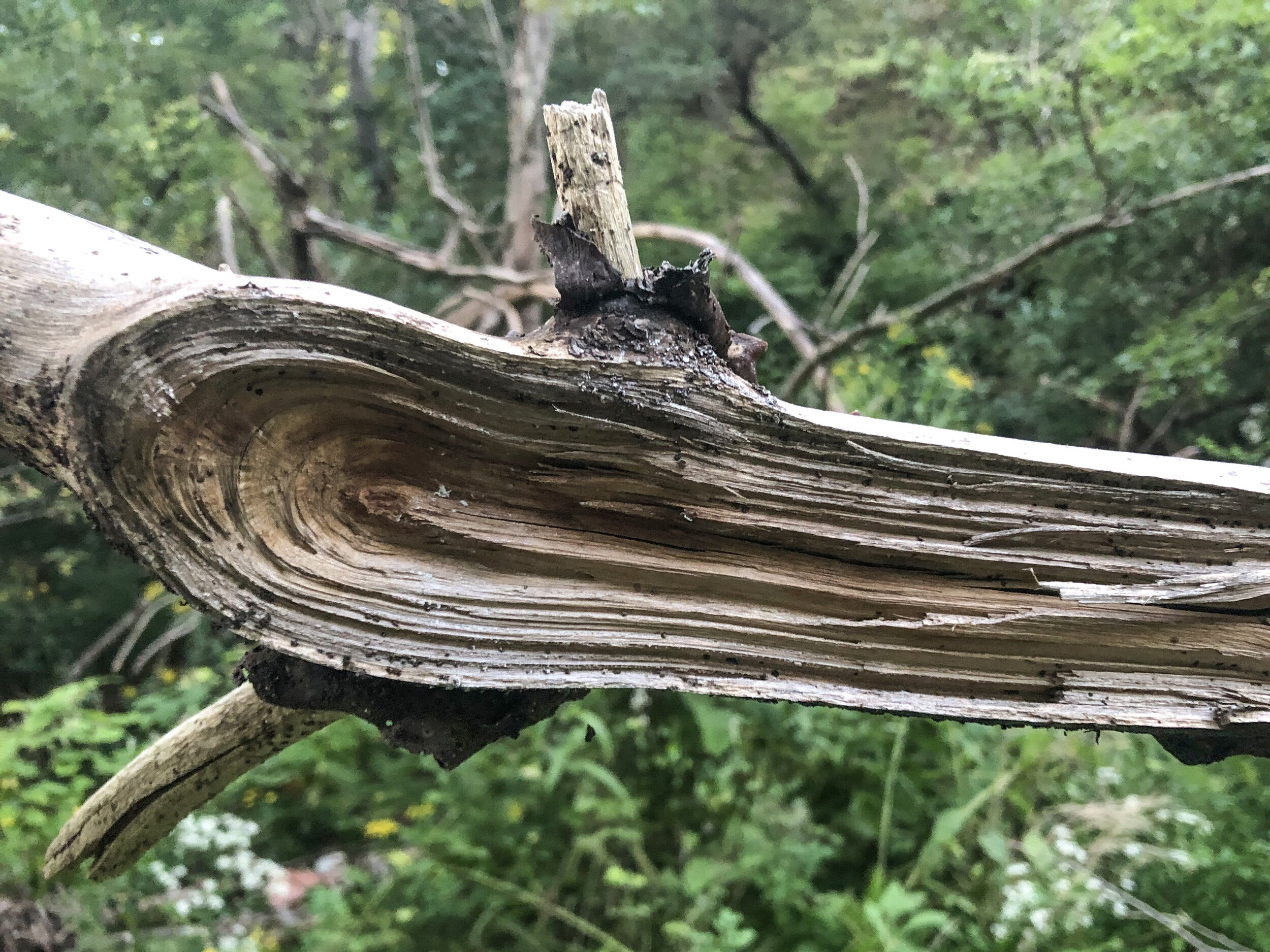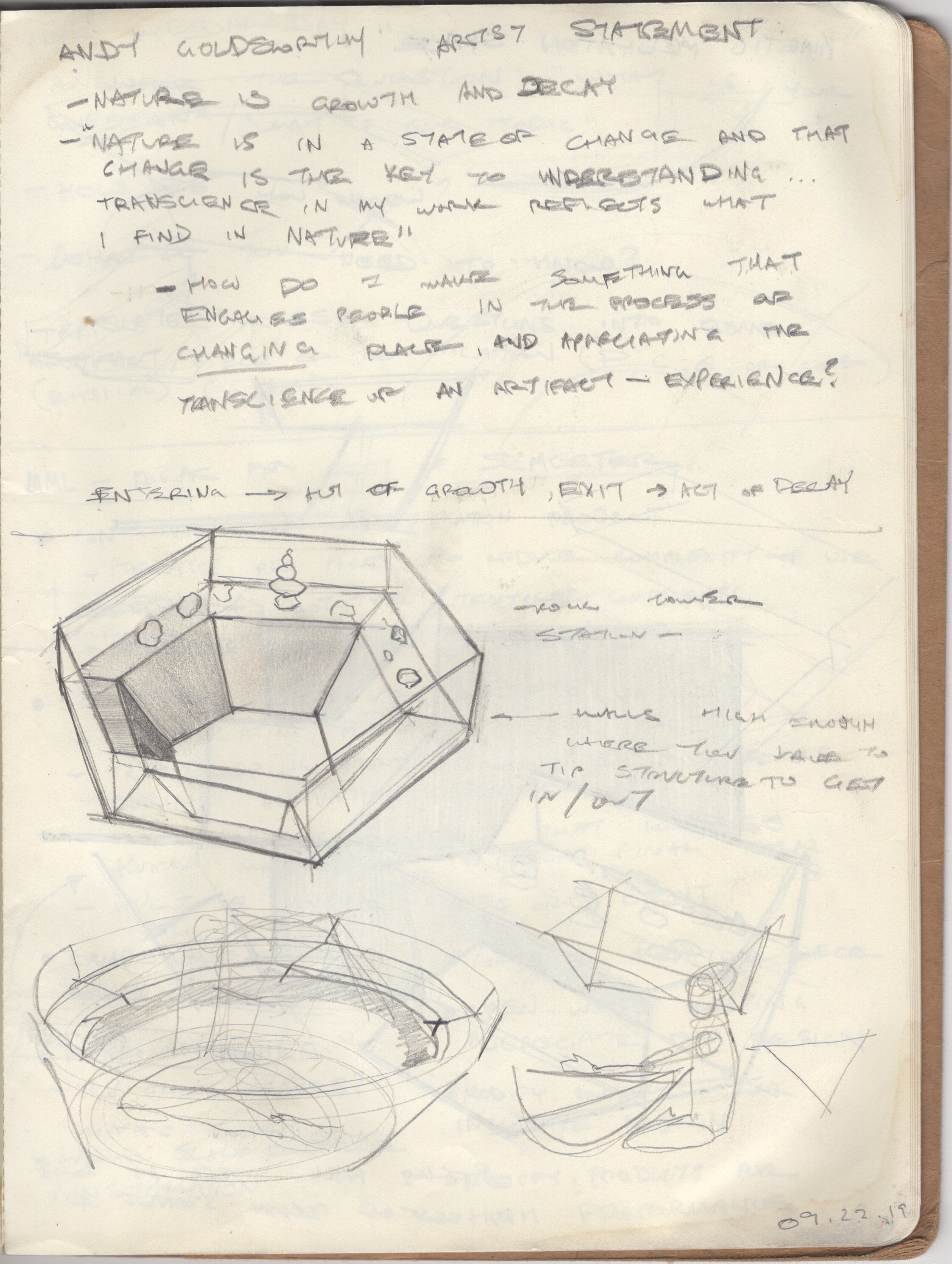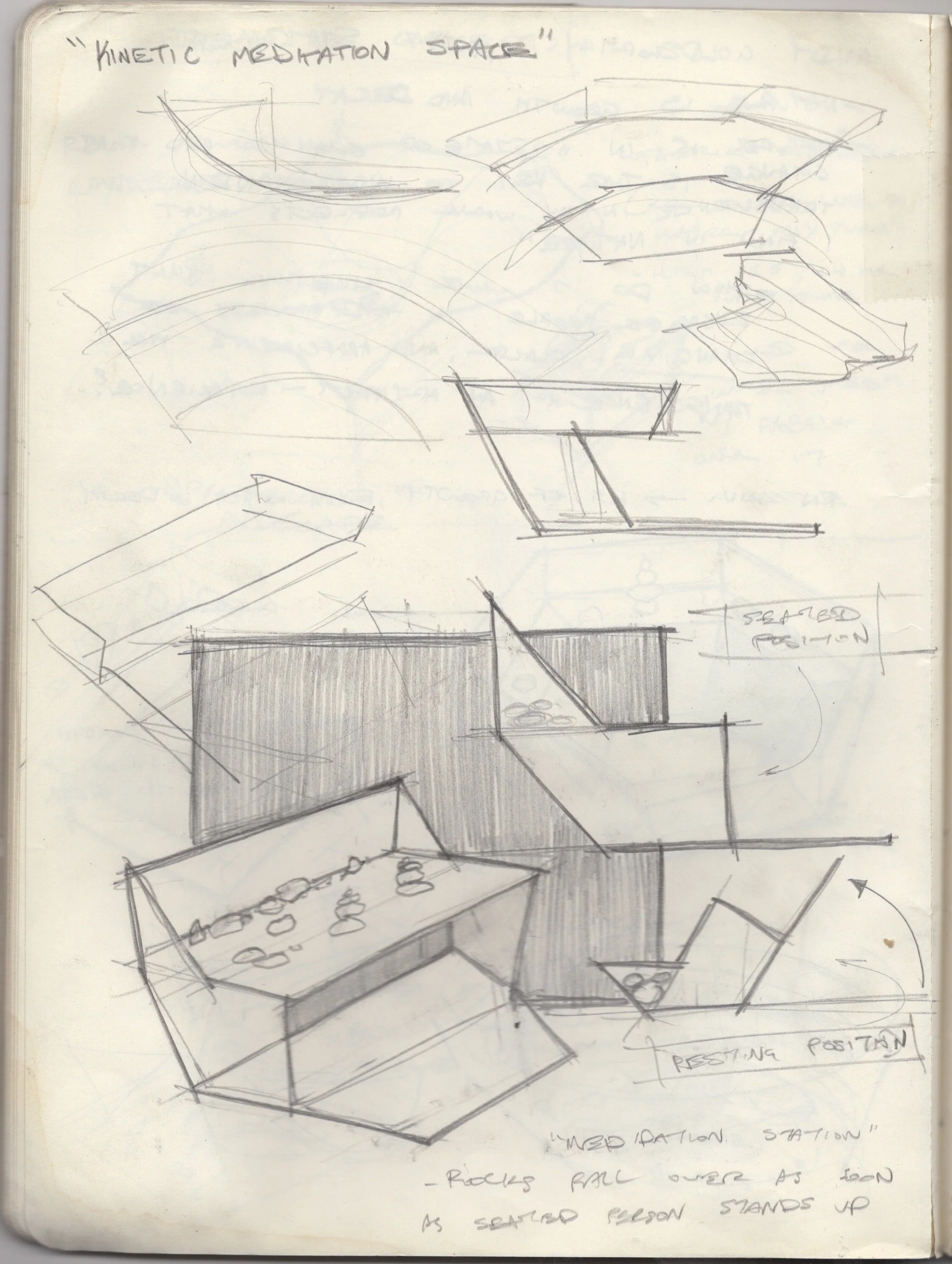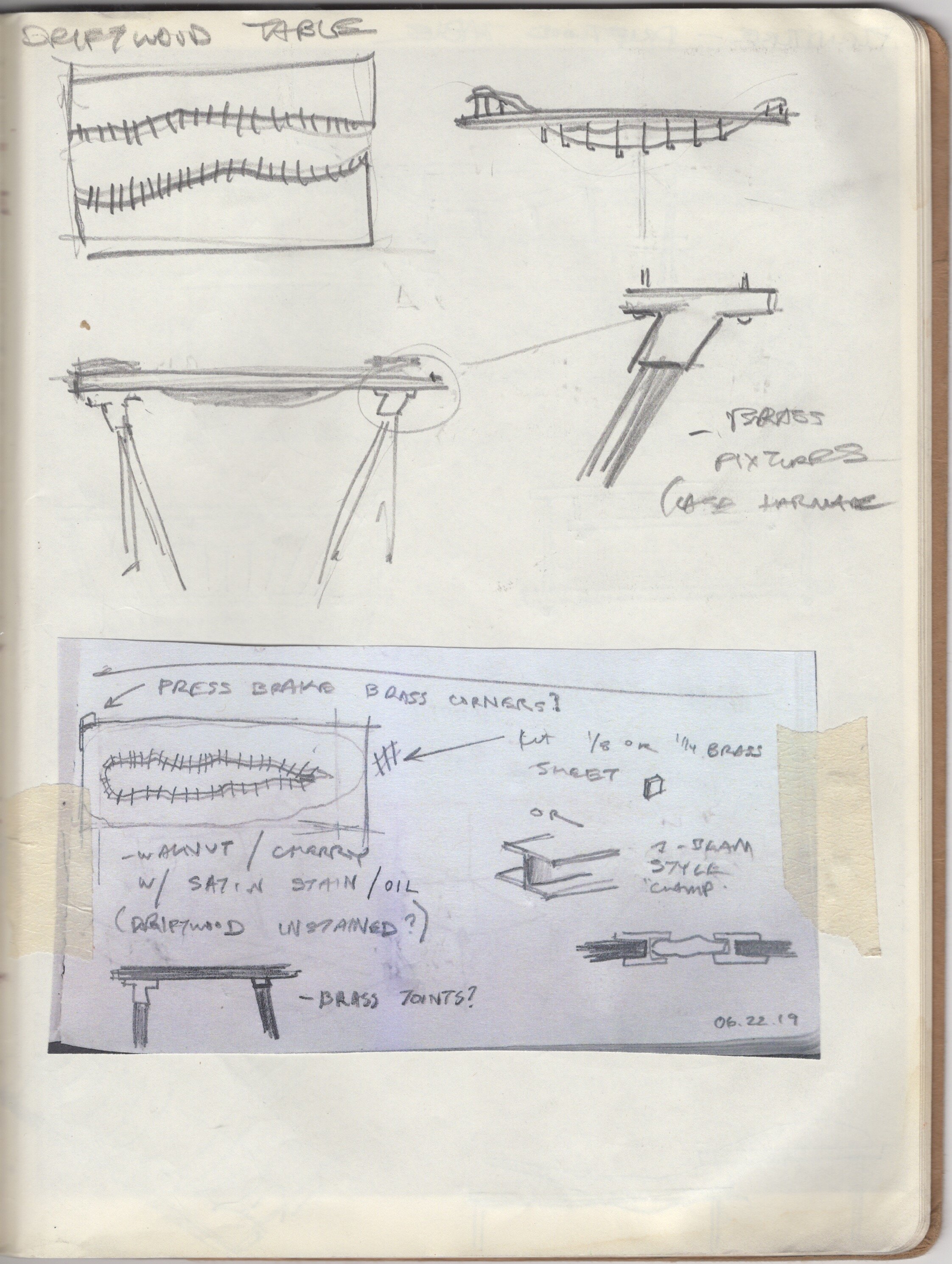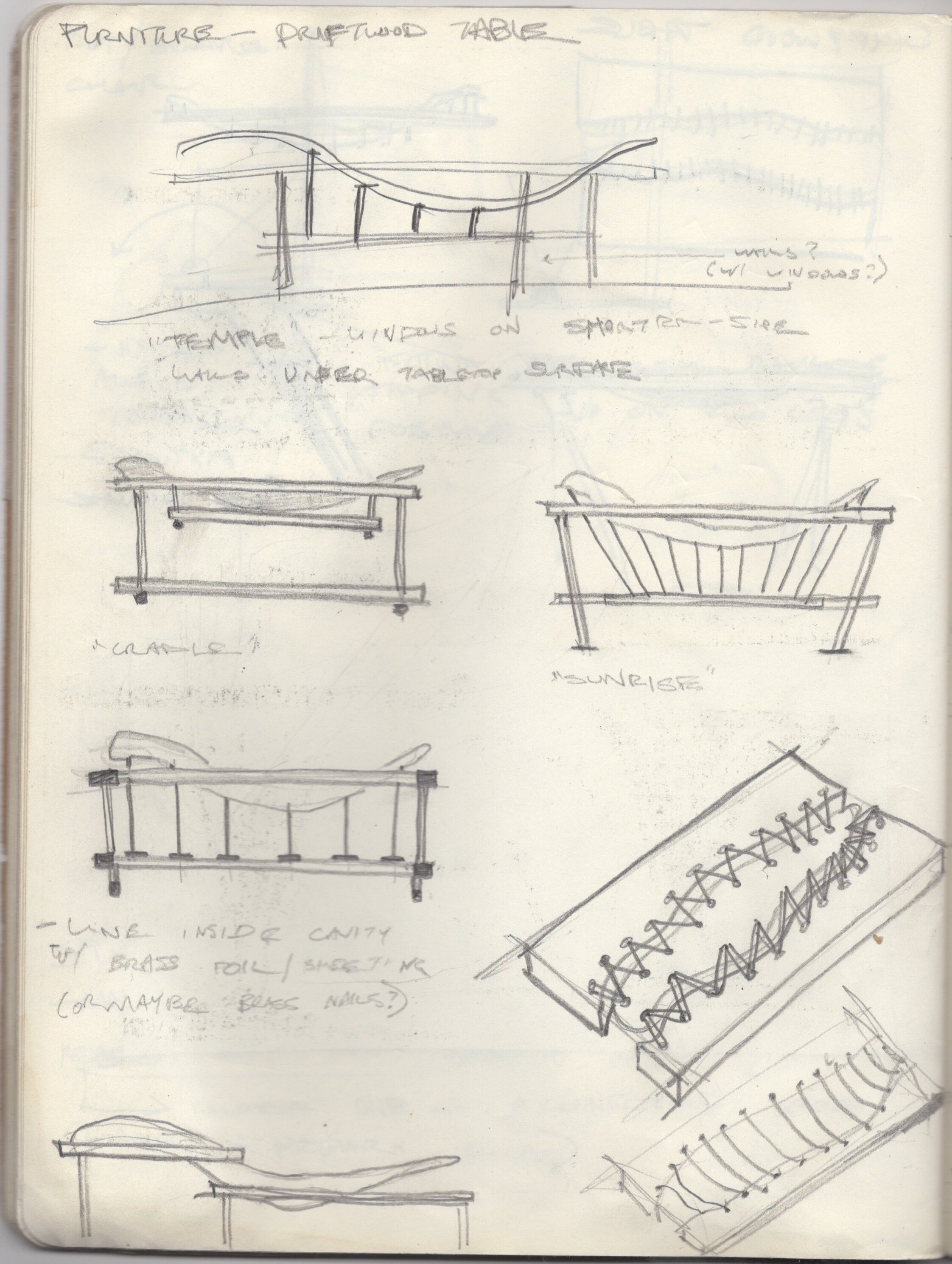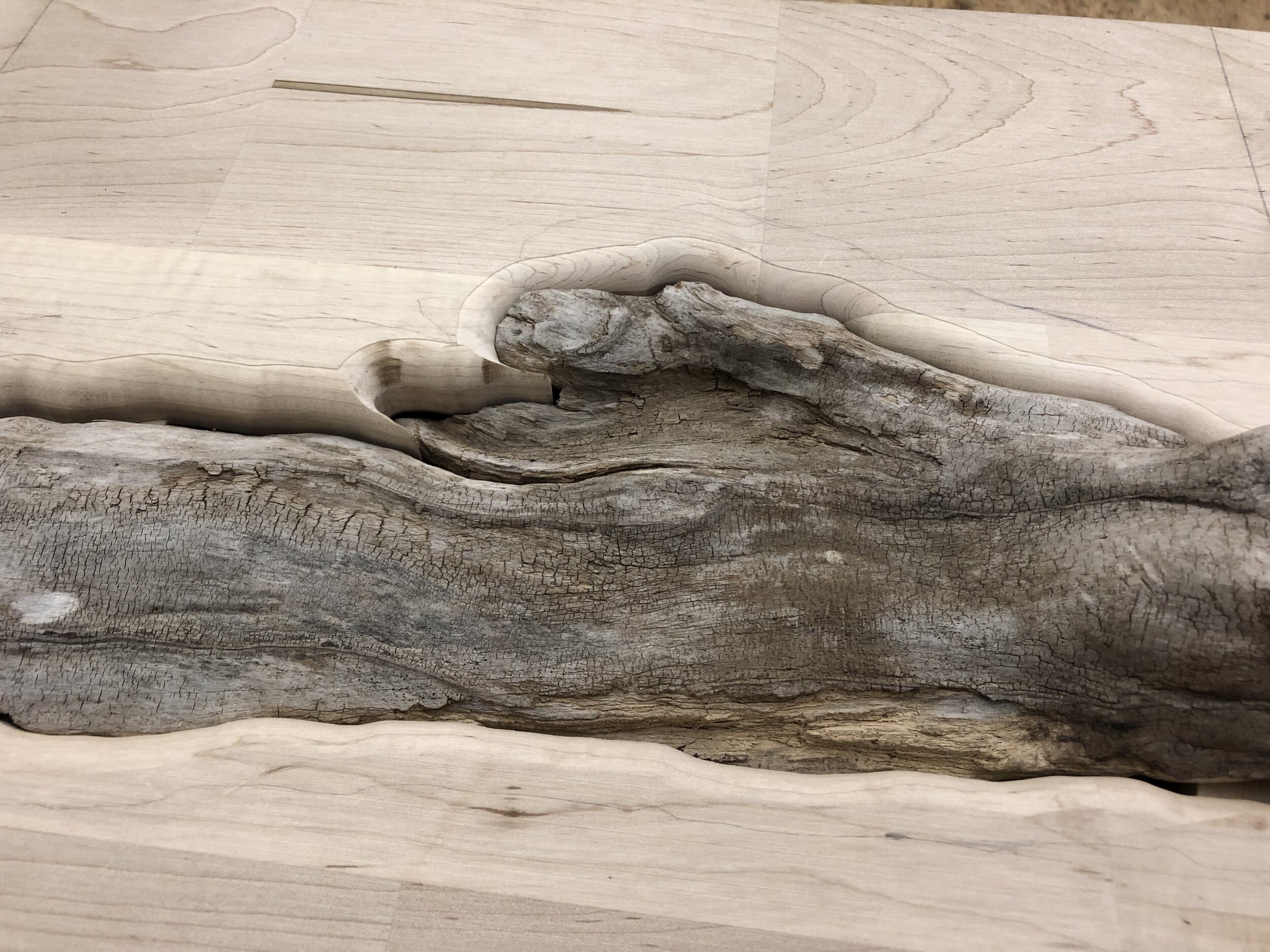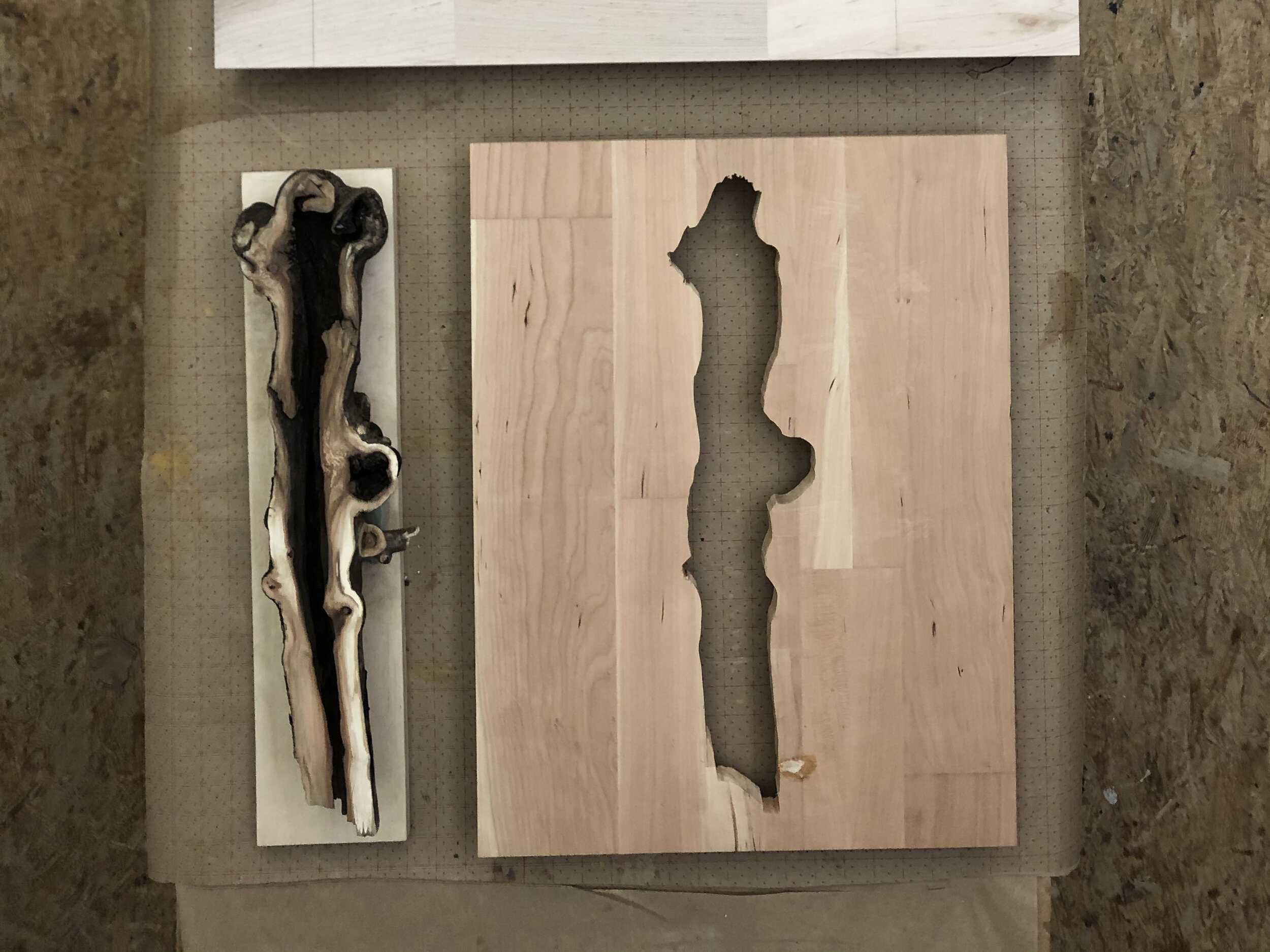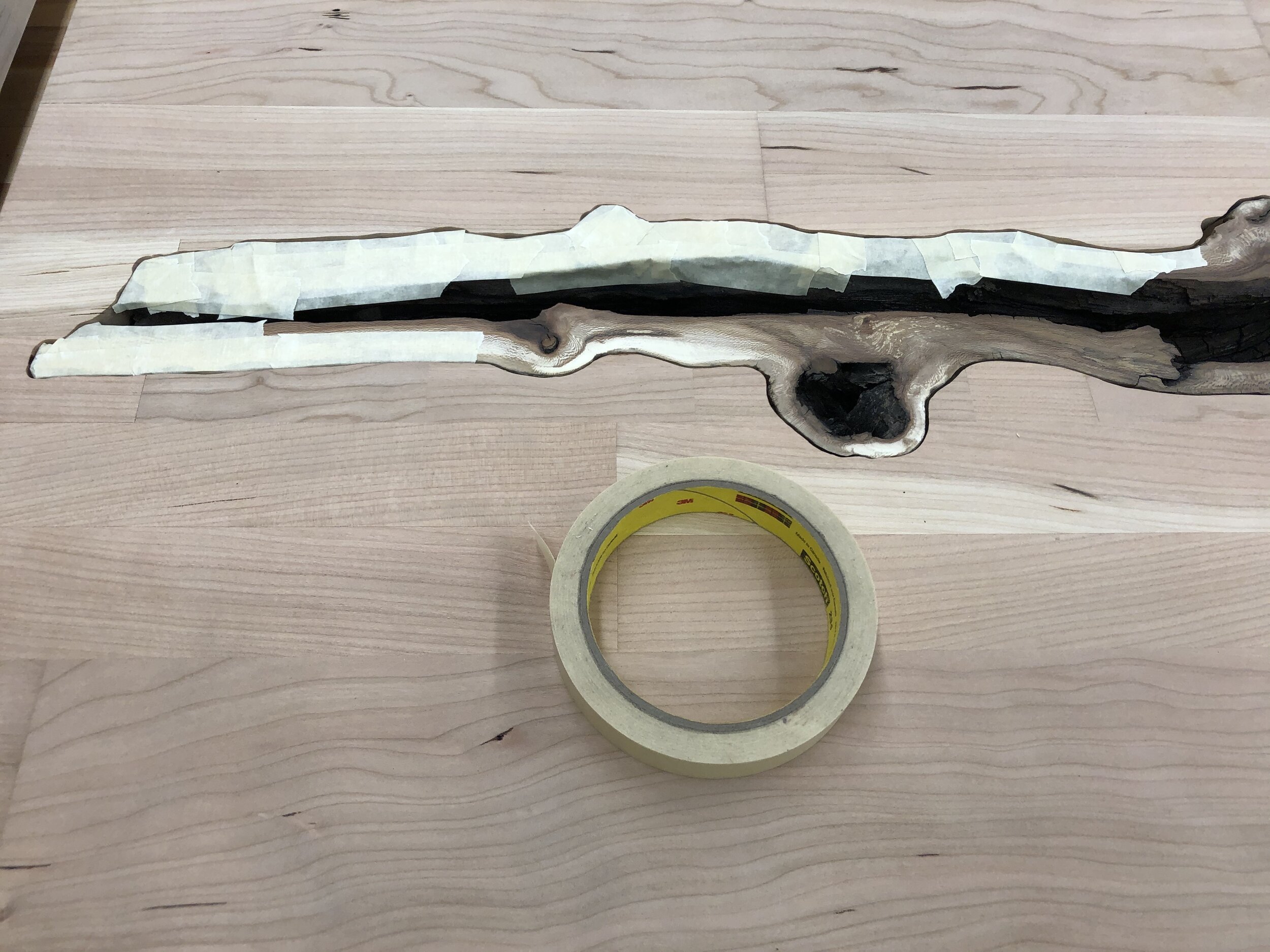Driftwood Table
Hollow Branch Table
Nature Translation
In this project I engaged in a diverse series of creative experiments, hoping to understand how to express the wondrousness of the natural world through a designerly lens. Each of the resultant artifacts proposed different ideas about translating nature into concept-driven products meant to prompt curiosity about how nature can integrate into ones worldview in unexpected and intriguing ways. My final proposal for the project was a pair of tables formed around natural artifacts from different contexts. The differences in how the tables incorporate the artifacts create a dialogue between the two pieces, speaking to contrasting relationships humanity and nature had in the environments that they came from. Together, these conceptual furniture pieces are meant to prompt thought about the different ways we engage with nature in our lives.
Initial Concept
The project began with a broad prompt: to tackle any world issue of our choosing as a way to investigate how design can be used for service and social innovation. I proposed several concepts, with a few key themes emerging around relationships with place, and how these are affected by objects. These ideas are what started me on the path to my final direction for the project.
A few of my proposals were: “tools to connect with nature or place”, “relationships between artifacts”, “leaving a mark”, and “personal history/self evaluation”. These foundational ideas are ones I found when thinking about a crossroads between product design as I had come to understand it, and significant making/mindfulness practices I had engaged in throughout my life. The notion of personal history became a significant influence for my early making exercises, but the initial development of the idea came more from thinking about the object-to-place relationships.
Research
My next task was to choose one topic to research, with the goal of mapping out the problem-space and any previously proposed solutions. I chose “connecting with place through objects”, which as I began my research quickly became “connecting with nature”. The personal significance of this topic quickly became a driver of my research, from my thinking about unstructured play as a child (discovering nature) to making things using found resources in that place (both functionally when camping, and poetically through stacking rocks and other rituals). I saw great potential here to use nature to drive a conceptual design project.
Some key points in my research diagram included adapting/personalizing products, altering the natural environment using objects, product-systems that encourage empathetic exploration, recording traces of nature, and using its systems constructively. I also recorded examples of engaging in acts of creation and ritual to situate nature meaningfully in one’s worldview, and explored artifacts that help one develop conceptual frameworks to evaluate their relationship with place.
Framing Issue
It wasn’t until this stage in the semester I began to really start clarifying and framing my issue. I had conversations with mentors that elicited the outline below, which was very useful in getting at the essential essence of my idea. Ultimately, realized that I needed to employ both my established sensibility to nature and my product design ability to introduce nature into peoples’ worldviews in a novel way. This is where the idea of “translation” started to come from; the idea that I could reveal the wonder of nature to people in a form-language that is accessible to them.
Exploring Problem Space
After researching the problem space and defining my issue, I moved to the making phase of the project. Below is a presentation of all the explorations into translating nature I made over the course of a couple months. Each looked at different material/form factors that could functionally represent nature in some way, as well as different approaches to communicating sentiments and eliciting thought from people. The media and meaning of each varies significantly, as for each I spent different amounts of time and explored different notions about nature’s significance, and roles it plays in our lives.
As I survey each exploration below, I describe what I learned from making that particular piece. At the end of each, I list a few key takeaways that influenced my final concept. Overall, this progression from exploration to proposal reveals a practice that moves fluidly between physical creation and conceptual consideration about expressing nature.
Past Exploration - Creative Ritual in Nature
Early on in the project I identified my long-held practice of building rock towers as one of the primary sources of conceptual inspiration for the project. The personal ritual —passed down to me from my father during shared journeys into nature—was a beautiful example of making in nature, using nature. I used these ephemeral creations as a way to engage more deeply with the places in nature I’d found throughout my life; this practice translated into my final concept in a variety of ways. Namely, the idea of focusing on a representative artifact from my experiences in nature, and the idea of using materials found in nature to guide the artifact I created.
Key Takeaways
-Examining personal history
-Using found materials
-Central representative artifact from experience
Exploration 1 - Poster of Experiential Factors
This poster was an attempt to organize my thoughts about all the factors that can influence a meaningful connection with nature. While this point in the process didn’t directly help me find a clear direction for the proposal, I found it to be a very useful exercise in cataloging different types of connections to nature that might influence the final concept. It helped me start to think tangibly about what a design intervention could be, and was also a useful facilitator of conversation about my viewpoint on the project and what was worth focusing on moving forward.
Key Takeaways
-Examples of Translation
-Tools to connect with place
-Notion of altering place / traces of experience
-Storytelling / communication through form
Exploration 2 - Magnetic Poetry
My next exploration was a response to the first; I sought to make a more refined and conceptually-abstract poster that would prompt the viewer to ponder what their own factors/reasons for engaging with nature might be. I chose a particularly striking photograph I’d made of a rock tower to represent the mysterious and wondrous quality of nature. Then, I created an outline for “magnetic poetry”, where the viewer builds a unique poem for themselves using the different words made available to them. My hope was that these poems would act as a foundation for people to examine their interest in nature.
Key Takeaways
-Concept-driven making
-Intriguing/wondrous form is key
-Reveal mysterious/ethereal quality of nature
-Significance of personal decision (in developing conceptual framework)
Exploration 3 - Impressions
These artifacts were the first major step toward discovering the physical form the final proposal would take. I went for a hike and took ten impressions of interesting textures in nature with air-dry clay. This exercise represented my desire to intuitively respond to intrigue in nature through making; I wanted to take away a permanent/lasting impression of place, both in the physical sense and sentimental sense.
When I presented these artifacts for review, I paired them with a labels meant to catalog the feeling each one had evoked in the moment I made it. Seeking to tie in the concepts from the previous exploration, I referenced words that had appeared alongside the image in the poster. Instead of attaching these labels to the impressions, I left them separate in order to question how directly the sentiments and the artifacts needed to be connected to each other—when separated, did they prompt more curiosity about what their relationship might be? I was met with mixed opinions here, which prompted me to seek out a way to further explore this relationship.
I pushed this idea further in trying to refine the concept, imagining what this practice of “impressioning” would look like translated into a product design form. I went out into nature once again and took with me a physical example of a texture that interested me: a piece of bark from a fallen tree. With it I made a vacuum-formed impression, a more direct translation of the original.
The idea here was that people could take a trace of nature from a meaningful experience of nature and send it in to a company that would make this permanent impression for them. The person could then record the story of the texture on the back of the framed piece, if they so desired. However the impression alone would act as a tangible piece of art for the home—a way to recall a memory primarily through the sense of touch.
The resulting artifact, while beautiful, ended up not being the right making-direction for me to pursue further. I found that this approach of plasticization abstracted nature too much, and that there was still a disconnect in the way I was trying to connect sentiment to the object. I realized here that the artifact alone needed to represent a higher-level idea, and that the process of translation shouldn’t diminish the inherent aesthetic/material qualities of nature that appeal to us.
Key Takeaways
-Artifacts as impressions of relationship with place
-Material as metaphor
-Act of translation shouldn’t “artificialize” nature
Exploration 4 - Wood Framing
The previous exercises led me to this one, which ultimately became the making-direction I pursued for my final proposal. After thinking deeply how I had explored my concept thus far, I sought a new way of translating through use of impression and a central representative artifact. I felt I would find purer expression of my ideasin an intuitive crafting exercise, resulting in a beautiful artifact made from natural materials. I took one of the many interesting knotted pieces of wood I’d collected from nature and responded to its genuine form using woodcraft skills. The negotiation between the framing piece of dimensioned wood and the chaotic knot contained within served as an honest and intriguing reflection of my ideas about integrating nature more purely into our structured world. Furthermore, I saw room for further exploration and iteration of potential relationships between the dimensional wood and different raw natural artifacts.
Key Takeaways
-Final aesthetic direction, honoring natural artifact
-Contextual translation, without abstraction
-Allows for material comparison + metaphor
-Engaging/poetic nature of craft object
Exploration 5 - Kinetic Furniture Piece
This exploration into using a furniture piece to facilitate an activity led me to the idea of making furniture for my final proposal. Here, I worked on an idea for a mediation station that allowed for a making-activity as well. It got me thinking about an accessible form language—furniture being a universally recognizable form—and how I could create a novel interaction in that product space using nature as a tool/material driver.
I settled on a platform for cross-legged seating, with a built in shelf for making miniature rock towers. My hope was to bring the meditative activity of creating with nature into a new space. For the piece I researched the concepts behind the work of Andy Goldsworthy, specifically evoking notions of nature as a cycle of growth and decay. I wanted to rise and fall of the rock towers to act as a metaphor of this idea.
The life cycle is represented by the motion of the furniture —the piece is balanced such that the weight of the rocks on the shelf cause the seating platform to rest upright, so the platform only lays on the ground when the weight of the user rests on it. As such, when they are done stacking rocks and stand up, the piece falls back into its upright resting position and the rock towers are destroyed immediately. This imitation of a life cycle situates the creative act as significant due to its ephemerality.
Key Takeaways
-Furniture as accessible product
-Entryway into active engagement
-Immediacy of notion of life
-Novel interaction communicating concept
Exploration 6 - Miniature Environments
At this point my idea of the formal direction for the final proposal had mostly taken shape, but I wanted to make something explaining the central theme that the proposal would speak to: relationships with nature. Since I had done explorations in both graphic design and products design, I wanted to round out this phase of the project by also experimenting with environments design. The result was these small environments, which act as the symbolic storyboards of my concept. Together they represent the contrasting relationships mankind has nature, ranging from highly restrictive (through alteration) on the left to highly empathetic (through accommodation) on the right.
Key Takeaways
-Questioning relationships with nature
-Idea of comparison - different forms nature takes
-Treatment of nature: restrained vs unrestrained
Defining Direction
Having completed my broad range of explorations, I was ready to draft the plan for my final proposal. I knew I wanted to pursue the aesthetic/material direction from Exploration 4, the idea of making furniture that came from Exploration 5, and expression of contrasting relationships with nature represented by Exploration 6. With these ideas in mind, I decided to scale up the wood framing exercise I had done with the wood knot into two tables. These would speak about two versions of nature I had identified—one highly altered by humanity, and the other highly respected by it. I began drawing concepts for tabletops that would incorporate found artifacts from these two different contexts.
The drawings above show the plans for the purer representation nature; it contains a piece of driftwood from a state park (low impact by people, high empathy from them). The other table would contain a partially-decayed branch from a city (high impact by people, low empathy from them). The differences in how the tables incorporate the artifacts—such as how permanently they are affixed and how much the pieces are altered—are metaphors for these human-to-nature relationships.
Fabrication
The fabrication processes for the tables differed significantly. For the driftwood I created a template that I used to cut the tabletop in two along the lines of its silhouette. I then rounded the edges of the two tabletop sections that meet the piece for a gentle transition, and created supports that connect the them together and hold the driftwood in place. For the branch, I split it in half so that the warping of the grain and hollowness show, and so that the tabletop would be flat throughout. To achieve this relationship, I cut out a traced hole in the tabletop, then used a pneumatic die grinder to create a place for the branch section to rest. Finally, I made custom hardware to secure it in place.
Driftwood Table
High empathy form factors: The driftwood maintains its original form in every way, and breaks free of the confines of the tabletop boundaries on both ends. It rests on supports that let it move above, between, and below the tabletop all at once. Additionally, the artifact is not fixed to these supports at all, and can be freed from the table and returned back to nature at any time. These considerations all represent an empathetic and harmonious relationship with nature outside of our usual daily context.
Hollow Branch Table
Low empathy form factors: The hollow branch is cross-sectioned to allow for conformity to the flatness of the tabletop, an idea also advanced by its confinement within the boundaries of the tabletop. Furthermore, the piece is fixed permanently to the table with custom fasteners, keeping the relationship between the two from ever changing. These considerations speak to the idea of the artificial world warping nature to fit its uniform ideals; this is a restrictive and extractive relationship with nature.
Final
The final pieces express relationships between nature and humanity poetically through novel interactions of materials. The Hollow Branch Table meets humanity where it is now, capturing a natural artifact and tastefully conforming it to adhere more closely to the traditional form of a table. The Driftwood Table, meanwhile, shows humanity a more dramatic step towards integrating with nature; it captures an artifact in its original state and diverges from conventional functionality in order to do so with empathy. Both translations of nature speak to the beauty it offers us when we let it into our worldview. Together, these contrasting metaphors prompt people to develop their own conceptual framework about nature, based on how they engage with these products in their lives.




